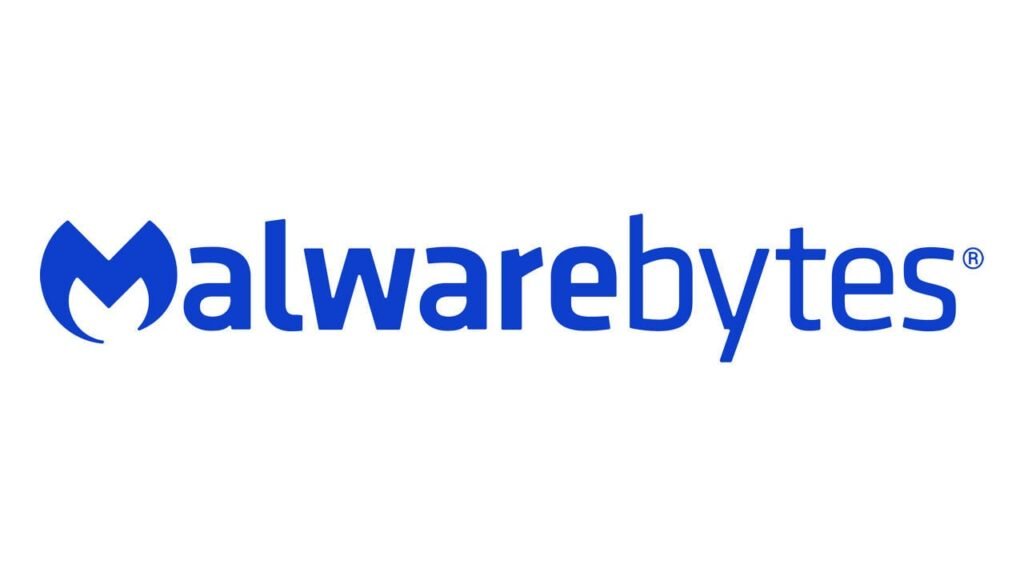Did you know that over 38 different AI functionalities powered by 200+ expertly written prompts are available on the LearnWorlds platform? They aim to boost productivity in making online courses1. This shows how artificial intelligence is changing education, making it more personal and efficient than ever.
With AI education platforms, teachers can now connect with students in new ways. This was once unthinkable.
In this article, we will give you a detailed Step-by-Step Guide to Creating an AI-Based Online Academy. You'll find out how to pick the best tools and platforms for your needs. LearnWorlds, for example, makes creating courses easier with its advanced AI.
By the end of this guide, you'll know how to start your own online learning system. It will use artificial intelligence to its fullest.
Get ready to start this exciting journey. It will change the future of education in your virtual academy!
Key Takeaways
- AI is transforming education by enabling personalized and efficient learning experiences.
- Platforms like LearnWorlds offer pre-written prompts that aid in course creation.
- Creating an online academy can be streamlined with the right AI tools and resources.
- Understand your audience to tailor your offerings effectively.
- Leverage AI functionalities to enhance engagement and productivity.
Understanding the Importance of AI in Education
AI in education has changed the way we learn. It makes learning environments more dynamic and responsive. Advances in AI have led to better learning outcomes, making education more personal.
The AI in education market was worth USD 1.82 billion in 2021. It's expected to grow by 36.0% each year until 20302. This shows how much AI can improve education.
AI technologies, like personalized tutoring systems, are key. They give real-time feedback, helping students learn better2. Interactive learning games and AI chatbots make learning fun and engaging.
AI is being used in many educational projects. For example, a game teaches high school students about AI and computing3. NSF has been leading in AI education for over 30 years, focusing on making education more accessible4.
AI systems offer 24/7 learning, with help from tutor bots and study buddies4. This breaks down the old classroom barriers, opening up new learning opportunities for everyone.
Identifying the Right AI Education Platform for Your Needs
Choosing the right AI education platform is key to your online academy's success. The e-learning sector is growing fast. Platforms with course authoring tools and easy-to-use online learning management systems are now top choices for teachers5. These tools help create engaging content for different learning styles.
Look for AI education platforms with cognitive insights, speech recognition, and real-time questioning. These features make learning more personal and effective5. Platforms like LearnWorlds offer strong course authoring tools and work well with other systems, making them great for schools.
Cost and user reviews are important when making a choice. Reading what others say can give you a clear picture of how a platform works in real life6. Also, features like chatbots and smart reporting can make things easier for teachers and students5.
https://www.youtube.com/watch?v=BzhlhMHdNbg
Step-by-Step Guide to Creating an AI-Based Online Academy
Starting an AI-based online academy takes several steps. First, you need to define your target audience. This means understanding who you want to teach. Knowing their demographics, education level, and how they learn helps you create content they'll enjoy.
Defining Your Target Audience
Understanding your audience well is key. It turns your academy into a place that really speaks to people. This step is crucial for keeping students engaged and helping them finish courses. With 1.4 million people needing to reskill by 2026, there's a big need for educational solutions7.
Selecting Course Subjects or Topics
After knowing your audience, pick the right course subjects. Look for topics that are popular and not well-covered. AI can help by showing you what's trending and what students want. Using AI tools can also check if your ideas will work.
Also, a good online academy needs a strong team. This includes experts, teachers, and salespeople7. You should also think about how students will pay for courses. And, always be ready to change your courses based on what students say7.
| Course Type | Delivery Method | Engagement Level | Flexibility |
|---|---|---|---|
| Self-Paced Courses | Asynchronous | Moderate | High |
| Live Classes | Synchronous | High | Medium |
| Hybrid Learning | Both | Very High | High |
| Collaborative Projects | Asynchronous | High | Medium |
Utilizing Virtual Classroom Software Effectively
The move to online teaching has grown a lot since the Covid-19 pandemic in 2020. It forced teachers to start teaching from home because of lockdowns and social distancing8. Now, many EdTech companies help schools, colleges, and universities set up these virtual classrooms well8.
Virtual classroom software is very flexible. It lets teachers and students connect from anywhere without limits8. It also offers live classes or recorded materials that students can watch whenever they want8. Tools like Zoom, Google Meet, and Microsoft Teams are favorites among teachers. They have features like tracking attendance, quizzes, feedback, and sharing videos8.
To make online learning fun, you can use tools that make testing easy and quick8. These virtual classrooms can hold all sorts of materials like ebooks, videos, images, and audio notes. This makes learning more interesting8.
Virtual classrooms let students from different places share their views. This brings more perspectives into the classroom8. Students can also watch recorded sessions they missed. This lets them learn at their own speed8.
To set up a good virtual classroom, you need a few things. A fast internet, a computer or laptop, software, and audio equipment are key8. It's also important to get used to the technology, plan well, and practice regularly8.
AI is becoming more popular in online teaching tools. It helps teachers be more creative and productive. It also gives insights into how students learn, making tasks easier for teachers9. AI can adjust learning materials to fit each student's needs and learning style9.
Tools like AudioPen, Canva Magic Write, and Quizizz help teachers create content, make quizzes, and have group discussions9. Using these tools helps create a lively online learning space that helps all students.
Machine Learning Course Development Best Practices
In the world of machine learning course development, using adaptive learning technologies is key. These tools help teachers make courses fit each student's needs and learning style. This makes learning more fun and helps students remember what they learn better.
By using adaptive learning systems, you can see how students interact with the course. Then, you can change the content to match their progress and speed.
Integrating Adaptive Learning Technologies
Adaptive learning technologies change how we make and teach courses. Most learners want courses that are flexible and tailored to them. Studies show that about 80% of machine learning material is learned in just 3–4 months. This shows how fast and effective learning can be with adaptive methods10.
To meet different student preferences, you can spread course content across various subjects. For example, Mathematics makes up 25% of courses, Computer Science 15%, and Machine Learning 15%. This helps create a curriculum that meets both industry needs and student interests11. Also, watching how students interact with the course lets you make it better over time.
When making your machine learning course, think about what your audience needs to learn. Many platforms show that people like interactive parts and real-world examples. Adding more hands-on learning can really help students understand and enjoy the course12.
| Subject Category | Percentage |
|---|---|
| Mathematics | 25% |
| Computer Science | 15% |
| Python | 10% |
| R Programming | 5% |
| Data Science | 20% |
| Machine Learning | 15% |
| Artificial Intelligence | 10% |
| Advanced Courses | 10% |
Designing a Comprehensive AI Curriculum
Creating an effective AI curriculum starts with clear learning goals. These goals should match what the industry needs. A comprehensive course framework ensures your curriculum meets educational standards and student needs.
Using the SMART framework in your lesson planning makes a big difference13. Each module should cover both theory and practical use. Bloom’s Taxonomy helps structure educational goals into different levels of thinking, making learning deep and wide13.
When designing your AI curriculum, use AI lesson planning tools13. These tools help create lesson plans that can be customized and edited. This flexibility is especially useful when using AI to analyze student data. Such data helps find the best teaching methods, improving learning results13.
Using instructional design models like ADDIE adds structure to your curriculum development13. It focuses on Analysis, Design, Development, Implementation, and Evaluation. This approach helps create a well-rounded educational experience that keeps improving13.
Keeping students engaged is key in your curriculum design. AI can turn content into engaging multimedia experiences13. For example, AI can help create interactive exercises and flashcards that meet different learning styles, making learning more fun13.
Adding hands-on learning through projects makes learning more meaningful14. This approach helps students apply what they learn in real-world situations. It closes the gap between school and work14.
| Aspect | Traditional Approach | AI-Enhanced Approach |
|---|---|---|
| Lesson Planning | Manual, often time-consuming | AI tools streamline and customize lessons |
| Content Delivery | Static content | Rich multimedia experiences engage students |
| Assessment Techniques | Standardized tests | Dynamic assessments guided by student data |
| Personalization | One-size-fits-all | Tailored content using AI insights |
| Engagement | Passive | Interactive, feedback-driven |
Implementing Intelligent Tutoring Systems in Your Academy
Adding intelligent tutoring systems (ITS) to your online academy is a smart choice. These systems use AI to offer learning experiences that fit each student's needs. This approach is gaining popularity, with about 65% of students now preferring online tutoring over traditional methods15.
It's important to create engaging learning materials to go with these systems. This helps keep students interested and helps them remember what they learn.
Creating Engaging Learning Materials
To make educational content effective, use different formats for different learning styles. For example:
- Interactive quizzes that check if students understand the material.
- Video content that makes complex ideas easy to grasp.
- Simulations that let students practice in a virtual setting.
These materials keep students engaged and provide feedback right away. This feedback is key for learning well16. Adding fun elements like badges and leaderboards can also boost motivation16.
Good instructional content should change as needed, based on how students do. Today, using predictive analytics to guess what students need is becoming more common16. Working with Learning Management Systems (LMS) makes everything run smoothly, helping both teachers and students17.
Automated Grading and Assessment Techniques
Automated grading is changing how we assess students in schools. It makes grading faster, so teachers can spend more time with students. This helps teachers focus on helping students rather than just grading papers.
There are many tools to help with automated grading. For example, Gradescope uses AI to quickly check assignments. It can handle different types of questions, making grading easier for teachers18.
Automated grading also works well with Learning Management Systems (LMS). AI uses machine learning to get better at grading over time. It looks at past assignments and teacher feedback to improve accuracy19. This way, it can grade both multiple-choice and essay questions fairly and without bias.
Teachers can get a lot of help from AI in grading. AI can give quick feedback to students. This lets teachers focus on grading while still controlling the process20.
AI can also help create questions that match educational standards. This means assessments are not just graded but also checked for quality20. AI grading systems make education more efficient. They provide feedback that's tailored to each student's needs. This makes learning more effective and prepares students for the future.
How AI Teaching Assistants Can Enhance Student Interaction
AI teaching assistants are key in boosting student interaction in online learning. They help educational sites create deeper connections between students and teachers. These tools are changing education in many ways, from K-12 to special education, meeting different learning needs21.
AI assistants offer personalized learning, which students really want. They help students connect more with their studies. For example, AI analytics can adjust courses to fit each student's needs, improving learning results22.
AI tools also provide help 24/7, which is great for students. They can get answers anytime, helping to fight the feeling of being alone in online classes. Studies show 57% of students find AI assistants helpful in answering their questions23.
To use AI teaching assistants well in your online school, follow these tips:
- Make sure students and AI assistants can talk easily.
- Use AI for grading and feedback to help teachers.
- Use data to make learning better and more interactive.
- Use chatbots to start discussions and plan class activities.
Using AI teaching assistants can make learning better and help teachers not get too tired. It lets teachers focus on teaching well. With the AI in education market expected to grow to $88.2 billion by 2032, using AI is key to staying ahead in education21.
Conclusion
As we finish our talk on starting a successful AI-based online academy, it's clear that AI in education is essential. It helps keep you ahead in the future of education. AI tools can make learning more engaging, tailored to each student, and easier to manage for teachers.
Building an online academy requires careful planning. You need to set clear goals, choose the right platform, and gather the best resources. This ensures your academy meets its objectives.
The e-learning market is growing fast, offering big chances for those who use AI well24. By using AI right, you can improve education quality and outcomes. This article has given you the steps and knowledge to start your own online academy.
Starting to use AI in education opens a new chapter in learning. It focuses on making learning personal and efficient. When creating your online courses, keep your goals clear and listen to feedback to improve learning2526.
It's more than just teaching; it's about changing how we learn today. Look into the practical uses of AI and lead in educational innovation.







